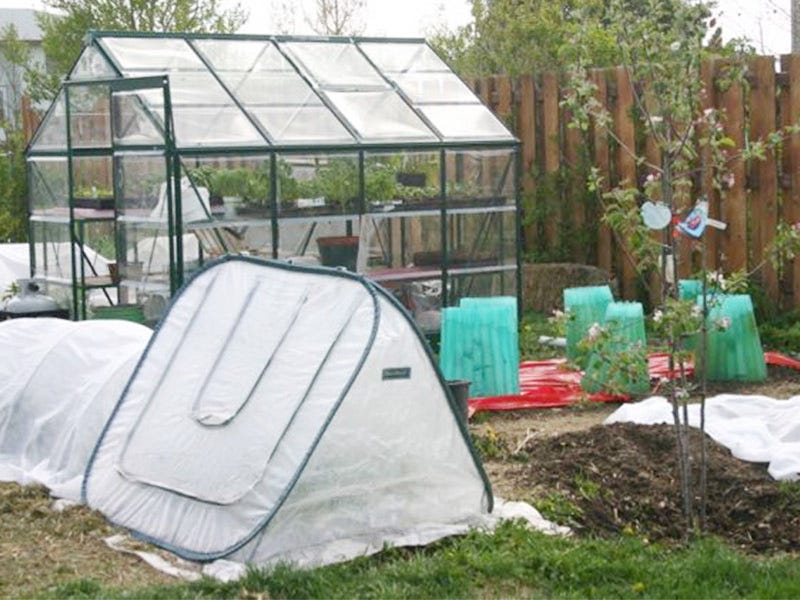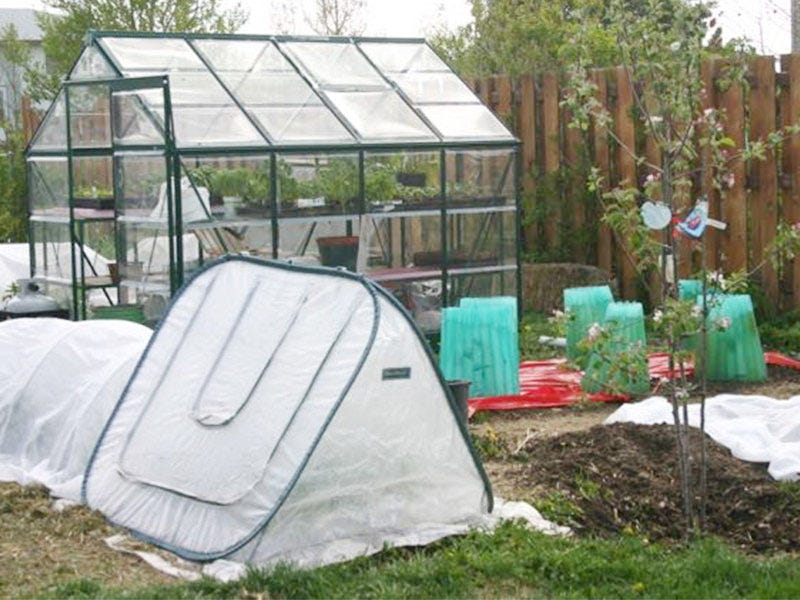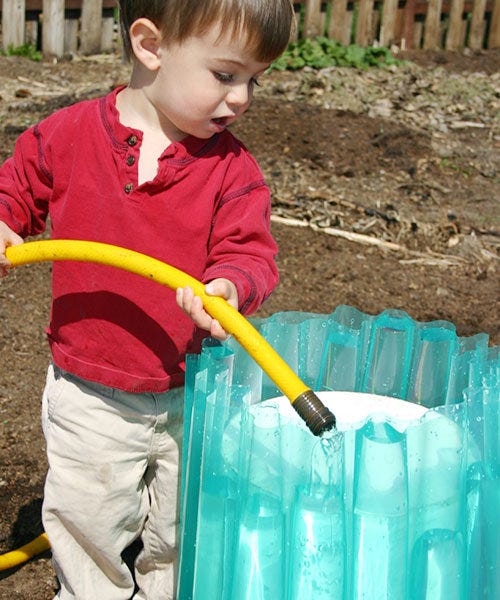Top 4 Ways to Extend your Growing Season & Plant TODAY!

Want to have a longer growing season? Sick of waiting to plant your seeds?
Then you've come to the right spot. Read on, and germinate successfully.

With a wide array of season extending techniques, the revered "last frost date" is practically irrelevant.
Although soil temperature will dictate, at least to some degree, when you can plant certain varieties, the season is much longer even for cold-climate gardeners who simply can't wait to put seeds and plants in the ground when you use these handy tools.
And if you need actual garden tools? Then you'll want to see this.
No matter what time of the spring, the key to a successful early season garden is warm soil. For instance, greens typically germinate at a minimum temperature range of 35 to 38 degrees F. Theoretically, you could plant in March, but they won't grow until the soil reaches that desired temperature.
However, if you warm the soil using black or clear plastic for a week beforehand, your seeds - or plants - will be much happier.
Once your soil is warmed to the point where the seeds or plants won't languish in the cold ground, there are a number of materials and techniques to use to encourage growth, as well as protect them from the common frosts, freezes, and outright blizzards we often see during this chaotic season.
Floating Row Covers for your Plants
These lightweight fabric sheets are a lifesaver to those who like to start early and continue later into the season. Typically, the "garden quilt" type weight (versus a nearly shear fabric that is great to use in the summer) will provide an extra 4 degrees of protection, and will give you a terrific boost on either end of the gardening season.
This heavier row cover allows 70 percent of the light to enter, and is light enough to set directly on top of shorter plants.

For early crops, such as lettuce, spinach, and other greens, plant as soon as the soil is warm enough, then set the floating row cover directly on top of the bed. You'll have to remove it to water, unless you set up drip irrigation, but you can keep it over the vegetables until all danger of frost is passed.
Want to set up a DIY drip system? Here's the complete guide and walk through. And after you read that... here's all the pieces you need to get it up and running.
For taller vegetables, such as peppers, it's often better to use some sort of hoop, such as one fashioned from PVC, to support the fabric over the plants to create the warmer microclimate underneath.
Besides cold protection, the other benefits of floating row covers is you don't have to worry about plants overheating, plus it does discourage many pests from reaching your plants in the early season thereby reducing their impact. Some people keep the lightest floating row cover on throughout the season specifically for pests.

Wall-O-Waters for Insulating your Plants
These are the best things ever created for tomato lovers. The ingenious design basically forms a water teepee around the plants where the water absorbs the sun's heat during the day and gradually releases it at night. You can put tomatoes in the ground (after the soil is warmed) up to 8 weeks before the last frost date, and the plants will withstand even being buried in snow as long as they are completely inside the Wall-O-Water.
We've got many options for keeping your garden in the best shape possible here.
To use them, plant your plant (this can be tomato, pepper, eggplant, squash, or really practically anything), then set a 5 gallon bucket over the top of it. Open the empty Wall-O-Water, and slide it over the 5 gallon bucket. Using a hose, fill each of the cylinders to approximately 3/4 full. Once all of them are filled, gently pull up the bucket, and the Wall-O-Water will close in at the top upon itself.
We've got landscaping supplies if your setup needs a little TLC.
As the plant grows, you will want to open the top using stakes or cages. And whether you leave it on throughout the season, or remove it once the danger of frost has passed, it is up to you. But if you're going to take it off, be sure to do so before the plant is too big, or you could damage it. Once you are finished with the Wall-O-Water, simply drain out all of the water, dry thoroughly, and store for next year. Some people do rinse out the cylinders with a mild bleach solution if anything grew in them during the season.
Solar Umbrellas and Portable Coldframes
Both solar umbrellas and portable coldframes create an ideal, protected climate for early season plants, plus they are super easy to use. As the name implies, the solar umbrella is simply a clear, umbrella shaped device that opens on a central post and pushes over the plants. This is ideal for taller plants, especially in windy situations because it will protect them from the battering breezes of the early spring. As long as there is enough ventilation, they can be left over the plants long into the season.
Portable coldframes share the same concept of protecting the plants, yet oftentimes with a larger footprint. There are a number of models on the market, and are excellent to use throughout the season. Not only do they help start the garden early, they give peppers, basil, and other heat-loving crops the optimum climate all summer. Most of the portable coldframes have zippered vents on either side allowing you to adjust the temperature since the greatest challenge with any type of coldframe is actually overheating the plants.
Simple cloches... aka Milk Jug Heaters for Extending the Growing Season
If you don't want to invest in a lot of gear this spring, one very simple technique that is available to nearly everyone, or at least everyone who drinks milk, is to use empty milk jugs as simple cloches. Cut off the bottom of the plastic jug, and push it into the soil around each plant.
During warm spring days, don't forget to remove the lid or you could very well have cooked plants by the afternoon. But overall, this is a very effective method, and is very helpful in giving those heat lovers the climate they need. Remove the cloche when the plant starts touching the top, which is most likely when it is safe from frost.
This section is dedicated to lawn care... keeping your greens, green all summer long.
You don't have to wait until the magical last frost date to plant your garden, as long as you are equipped with any of these tools to protect your young plants from the harsh cold. Plant now so you can enjoy a long and bountiful harvest.
Still have a questions? Use form below and we'll get right back to you. Like this content? Join our email ranks by clicking here.
